
We spent another fantastic morning in the vibrant, gorgeous city of Portland, Oregon, in the heart of Old Town, together with undergraduates and graduate students excited about neuroscience research as well as sophomores from Fort Vancouver High School eager to connect with fellow youth at p:ear, a remarkable, art and food-filled space serving young people without access to safe housing.


LEARN MORE: Noggin @ p:ear
LEARN MORE: Noggin @ Public High Schools
The Fort students wanted to listen, learn, ask questions and perhaps do something about houselessness, an issue of serious concern in the Pacific Northwest and around the country. Housing is beyond the reach of many, as prices rise, corporations and wealthy individuals purchase 25% of our housing stock as “investments,” and affordable options continue to vanish.
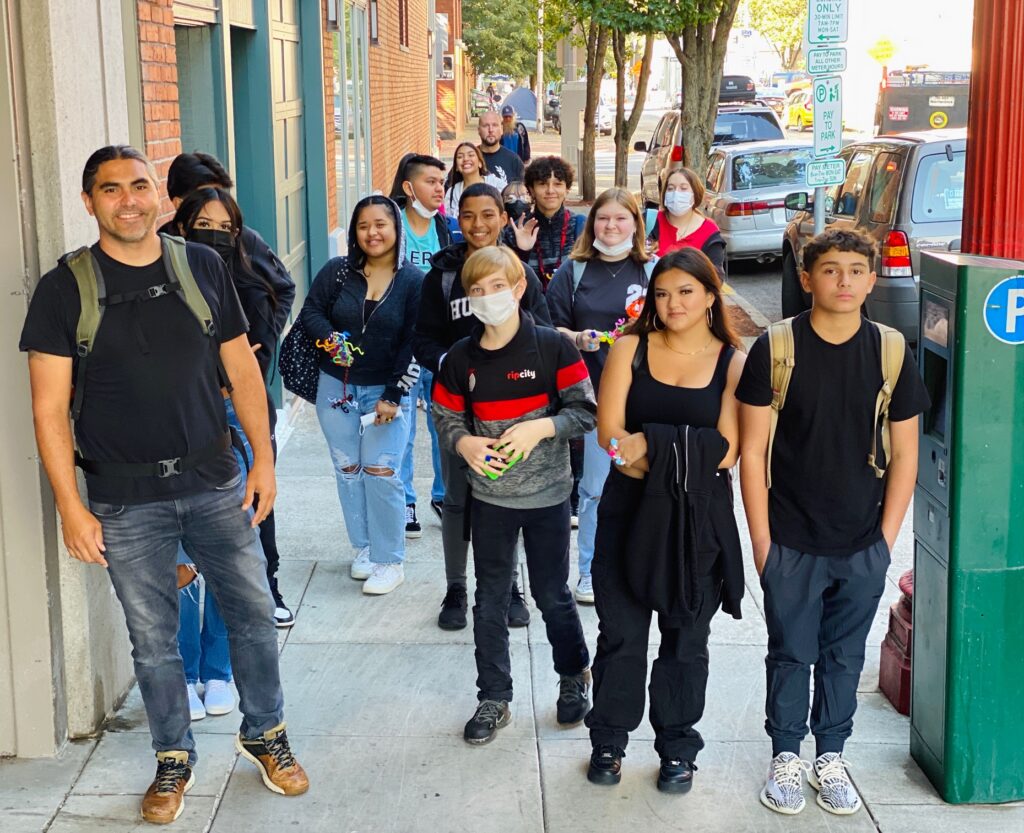
LEARN MORE: Homelessness in Portland
LEARN MORE: Homelessness in the Portland Region
LEARN MORE: Homelessness and Public Health: A Focus on Strategies and Solutions
LEARN MORE: Why the Road Is Getting Even Rockier for First-Time Home Buyers
LEARN MORE: Investors Bought a Quarter of Homes Sold Last Year, Driving Up Rents
And without housing, young people struggle to get sleep, and to stay safe.

They sometimes use psychostimulants to remain awake during dangerous night time hours, or develop dependence on doctor-prescribed opioid drugs. Some experience racist police harassment for loitering or cannabis use, along with family abuse and abandonment (often because they’re gay, lesbian, bisexual or trans). Others are subjected to violence-inciting dehumanizing language from some politicians.
LEARN MORE: Listening to testimony @ p:ear
LEARN MORE: Prescription Drug Misuse among Homeless Youth
LEARN MORE: Risk Factors for Substance Use Among Youth Experiencing Homelessness
LEARN MORE: Persistent and aggressive interactions with the police: potential mental health implications
LEARN MORE: Evidence of Effect of Permanent Supportive Housing on Health
LEARN MORE: Prevalence and Correlates of Youth Homelessness in the United States
LEARN MORE: LGBTIQ+ Homelessness: A Review of the Literature
LEARN MORE: Homelessness experiences and gender identity in a population-based sample of adolescents
LEARN MORE: Making (and Framing) the Connection Between Housing Affordability and Health
LEARN MORE: Access to Affordable Housing Promotes Health and Well-Being
LEARN MORE: Dehumanized Perception: A Psychological Means to Facilitate Atrocities, Torture, and Genocide?
LEARN MORE: Governor candidate Betsy Johnson calls Portland ‘city of roaches’
Though not one of us – including billionaire-backed political candidates, or the billionaires themselves – would likely fare well, or meet particular behavioral expectations, if we were in similar circumstances, deprived of sleep and safety, and subjected to dehumanizing rhetoric by those benefiting from resources, housing and regular slumber.
LEARN MORE: Landscapes of the Brain: Seeing us all through research & art
Welcome to p:ear!
WE LOVE p:ear!! We were all welcomed on a bright fall morning, and set up our colorful Fort + Noggin tables brimming with brain specimens, pipe cleaners and art!

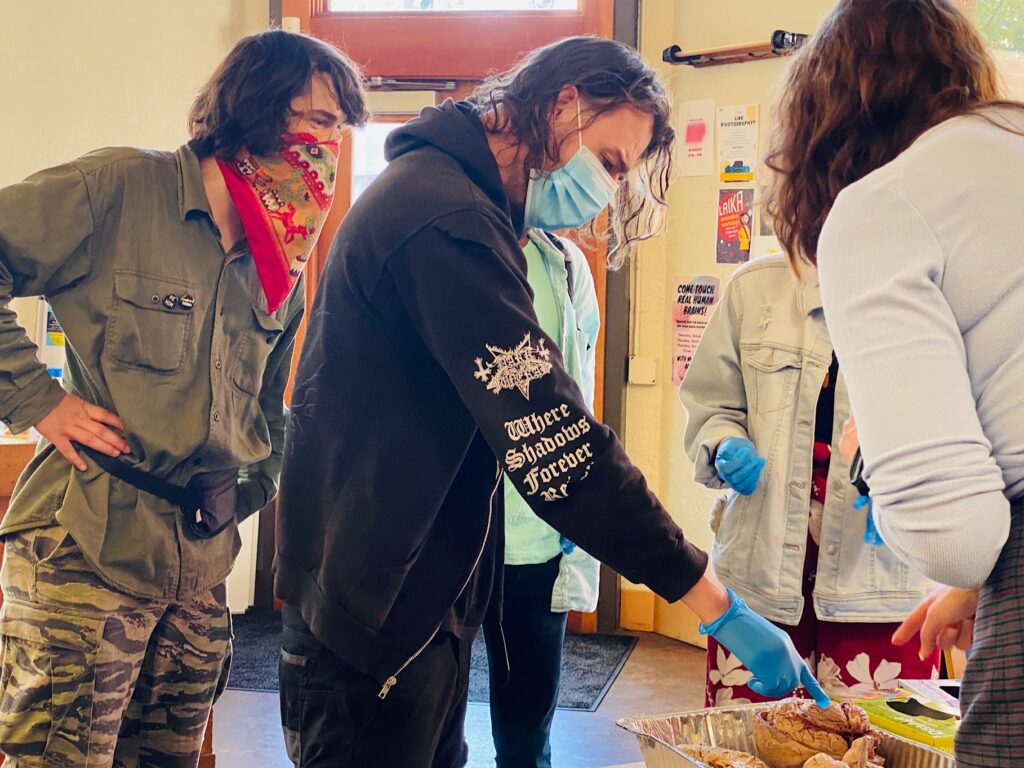

People had questions, including Fort sophomores, who are organizing bags of what they hope are useful items to offer for anyone who feels they could benefit. They heard feedback on what to include, including bandaids and dry socks – but also art supplies, paper and pens for making and drawing things, too!


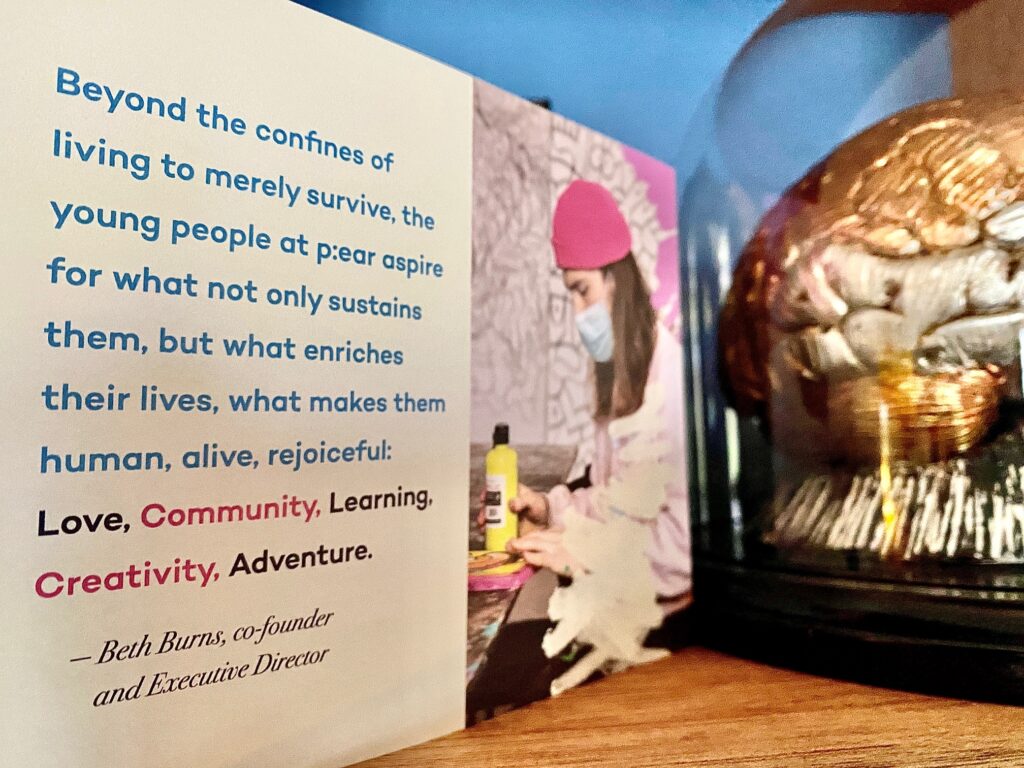
Our volunteers joined p:ear in fall 2020 to distribute similar items in “Noggin Vesicles” – screen-printed bags filled with hand-stitched brain masks, KN95 masks, art supplies, 3D printed brains, “brain” socks, first aid kits, hand sanitizer, t-shirts, toothpaste and toothbrushes, and emergency blankets.

WHAT DID WE PUT IN OUR NOGGIN VESICLES: Returning to find a voice
ALSO: What is a vesicle?
Sleep is essential for everyone’s mental health
Many youth without safe or consistent housing struggle to sleep.
Some also noted the early start time for 9 – 12th graders in Vancouver Public Schools, including those at Fort Vancouver (7:25am!) which, according to extensive, evidence-based neuroscience research, is far too early for the healthy development of adolescent brains!
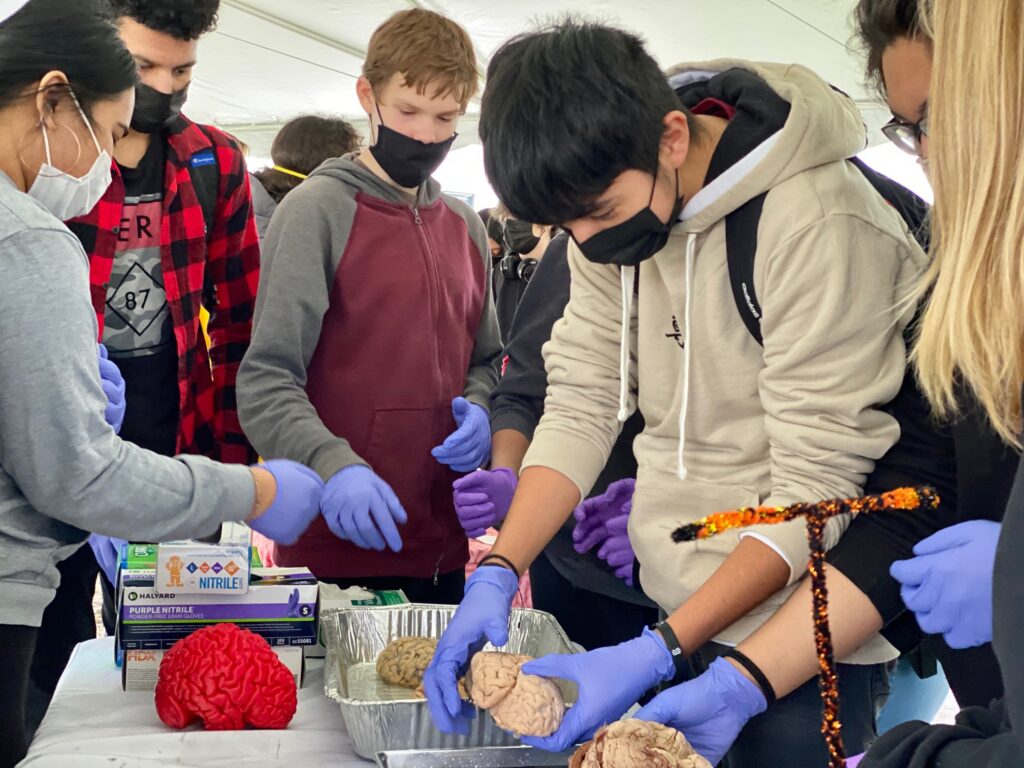
LEARN MORE: Tired Trappers at Fort
Based on research, we should prioritize sleep, and adopt a “housing first” policy for anyone experiencing homelessness. Seattle Public Schools moved their start time one hour forward, and experienced significant drops in absenteeism, fewer deaths and injuries from traffic accidents and reduced diagnoses of anxiety, depression, suicidal ideation and ADHD. Academic performance improved.
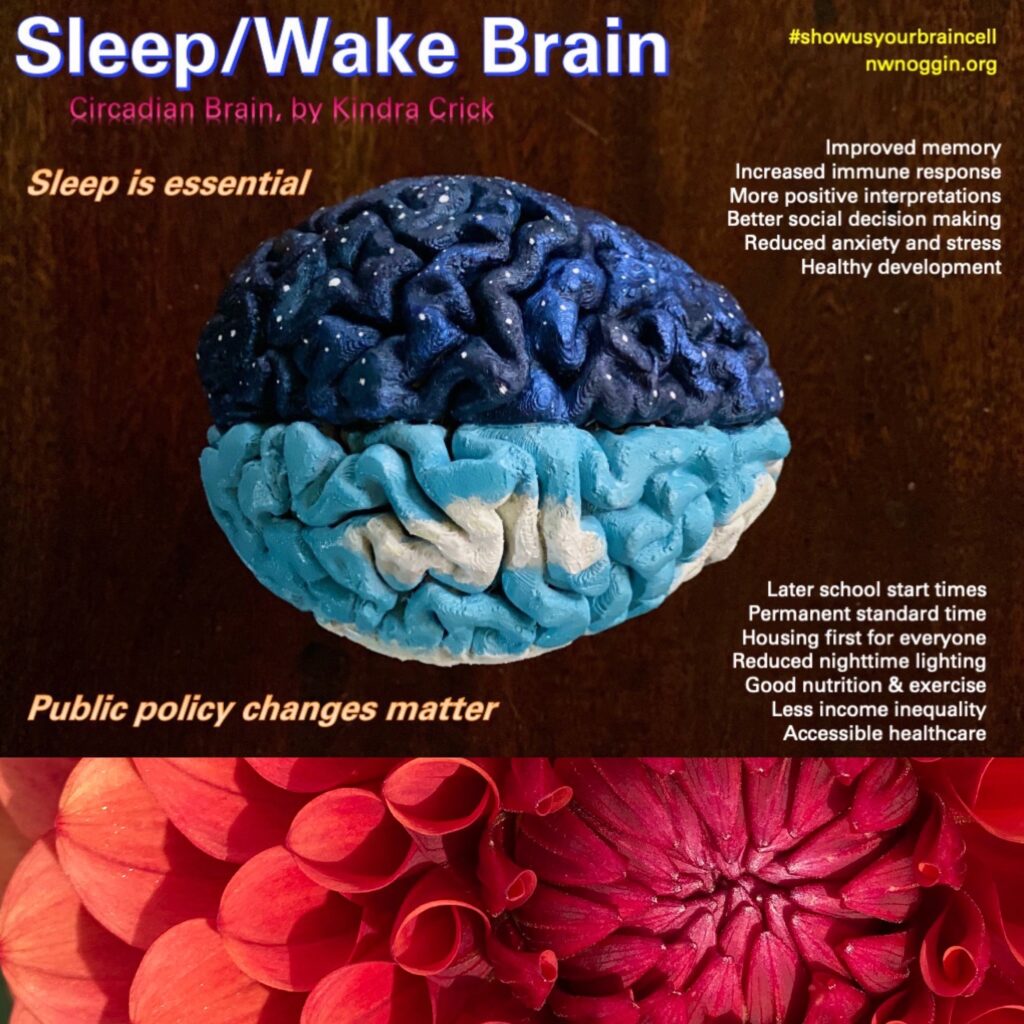
Later school start times and the adoption of permanent standard time – NOT permanent daylight savings time, which would force K-12 students to wake up in darkness much of the year – would also improve individual brain and community health.
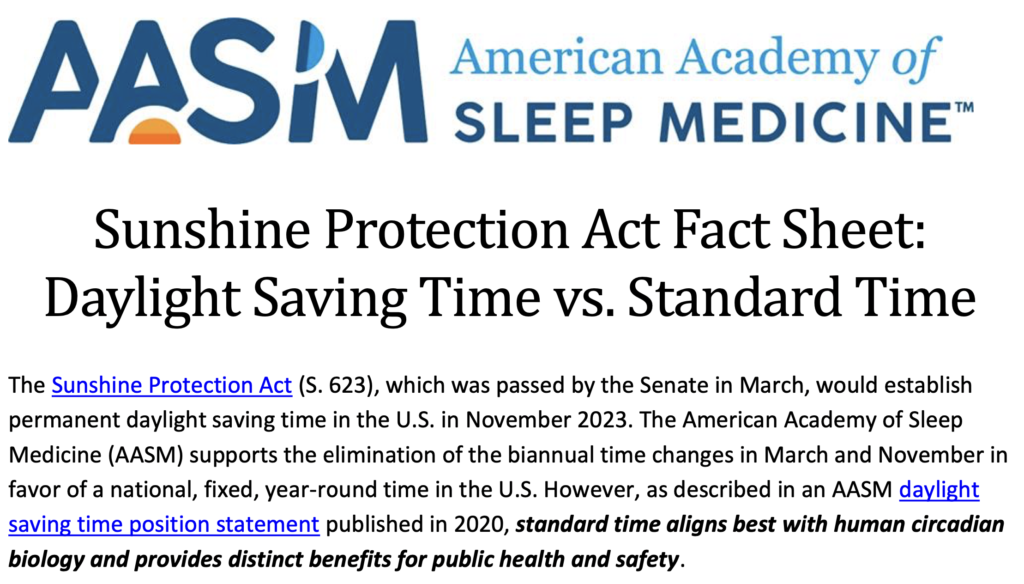
LEARN MORE: Sunshine Protection Act Fact Sheet (Daylight Saving Time vs. Standard Time)
LEARN MORE: American Academy of Sleep Medicine opposes permanent daylight saving time bill
LEARN MORE: The influence of school time on sleep patterns of children and adolescents
LEARN MORE: Later school start times may reduce sleep deficits for high school students
LEARN MORE: Exposure to violence, social cognitive processing, and sleep problems in urban adolescents
LEARN MORE: The Prospective Association between Sleep Deprivation and Depression among Adolescents
LEARN MORE: Sleep Deprivation in Adolescents and Adults: Changes in Affect
LEARN MORE: School Start Times for Adolescents
Jessica Kain, the Education Coordinator at p:ear, and Sam Doyle, the Art Coordinator, spoke with all the students, introducing p:ear and answering additional questions they had about their visit.
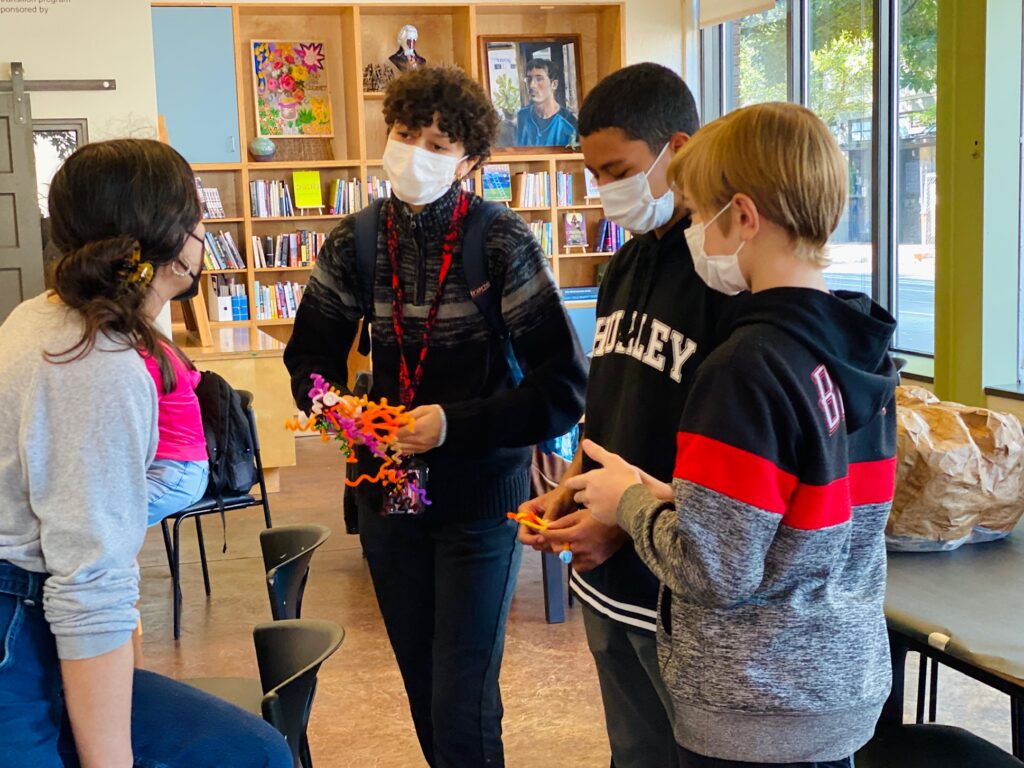
Community connections make cities beautiful
By going places, and coming together in a warm and welcoming space – including p:ear youth, high school students and teachers, university undergraduates, graduate students and faculty – we had the chance to listen and get to learn about each other and our brains. At least a bit!
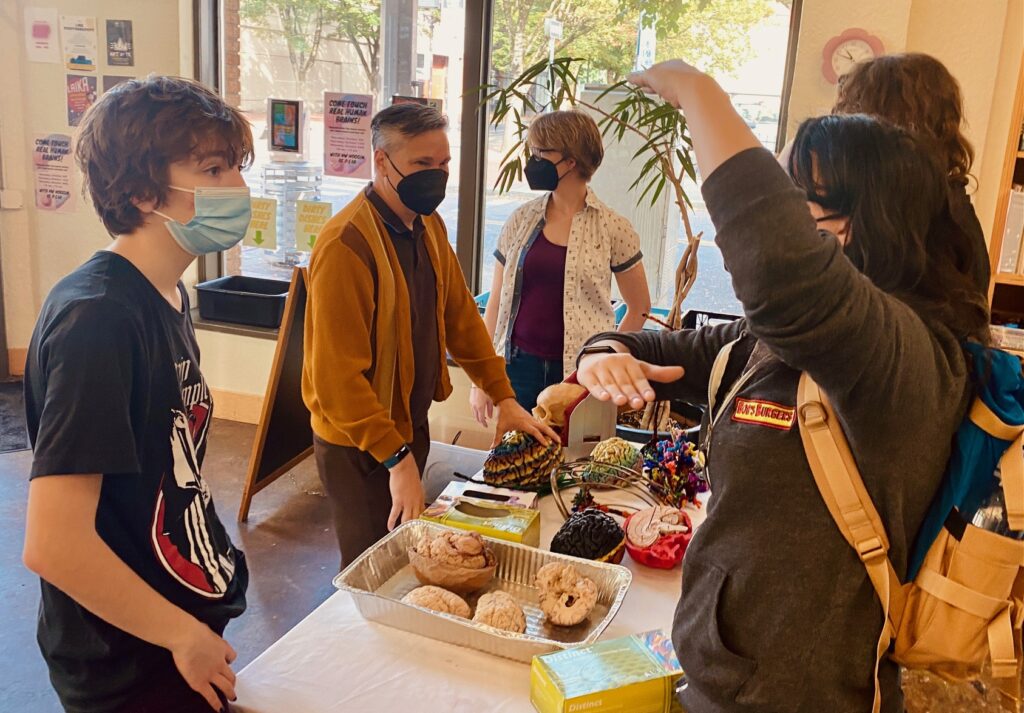
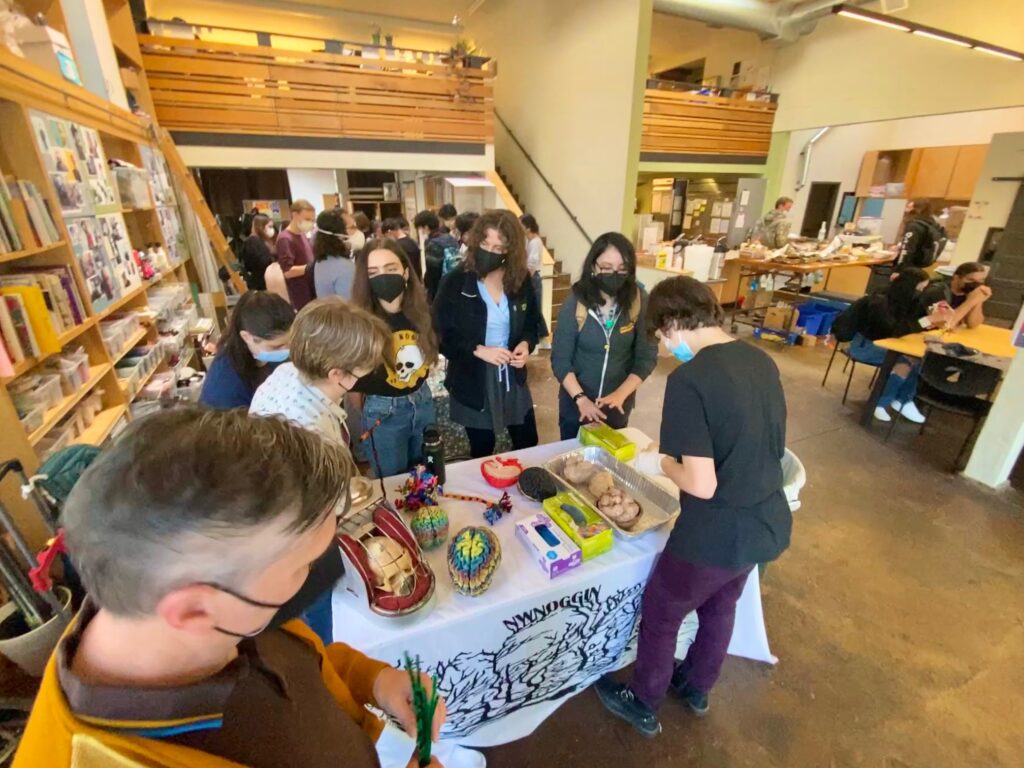
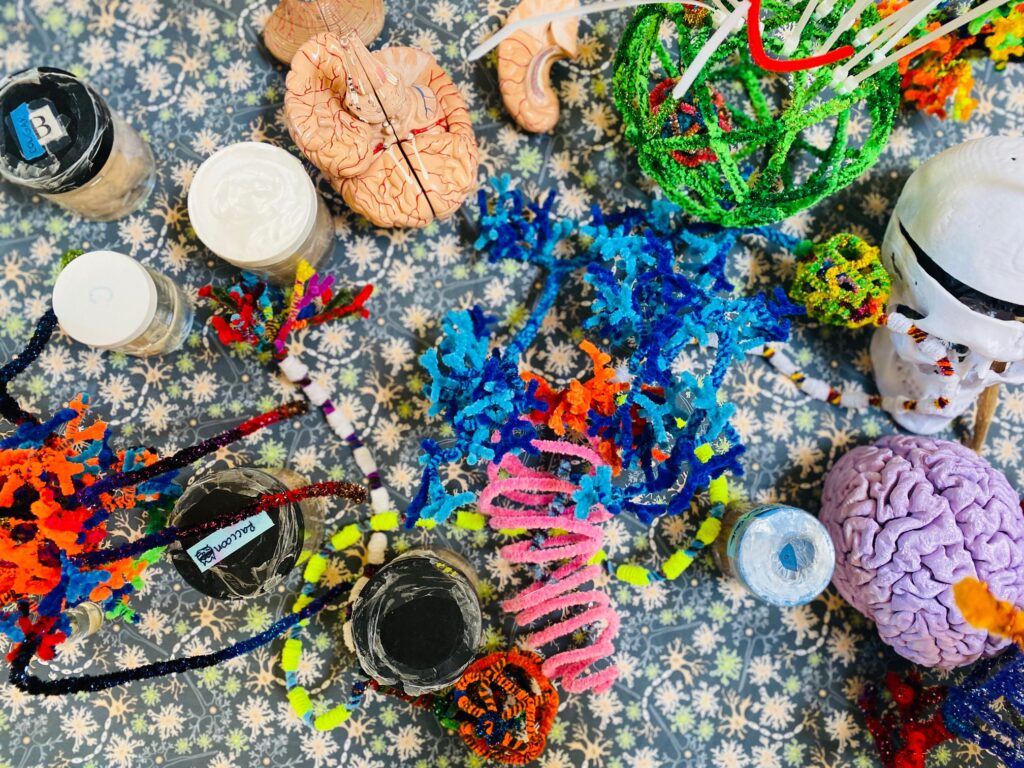
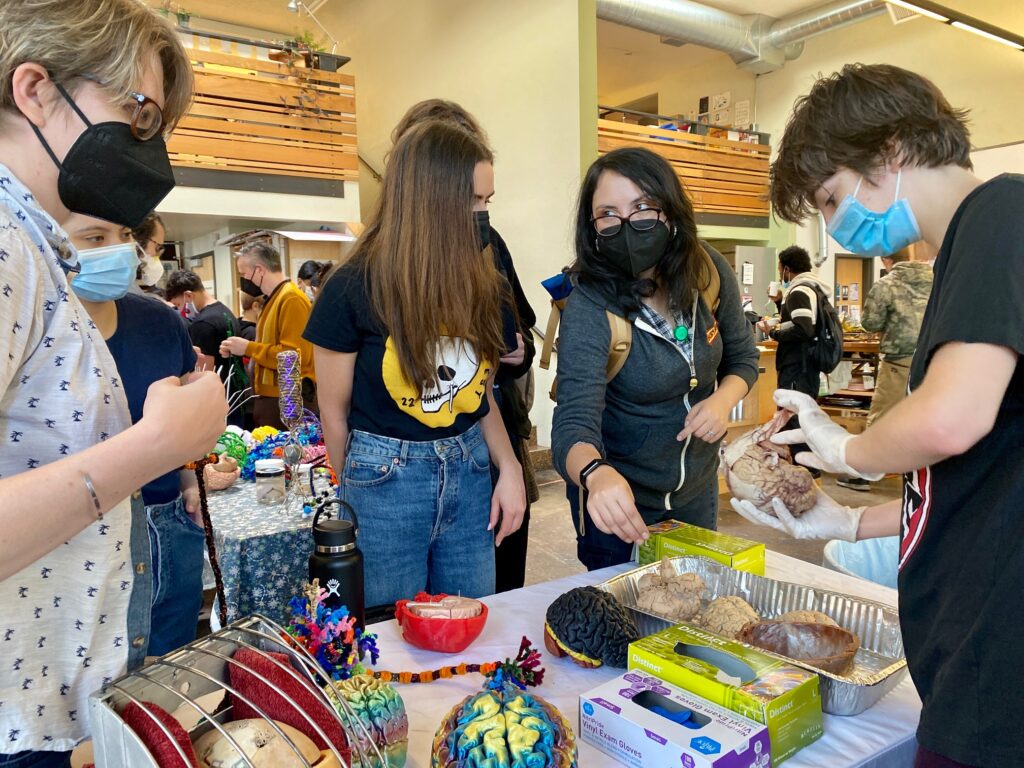
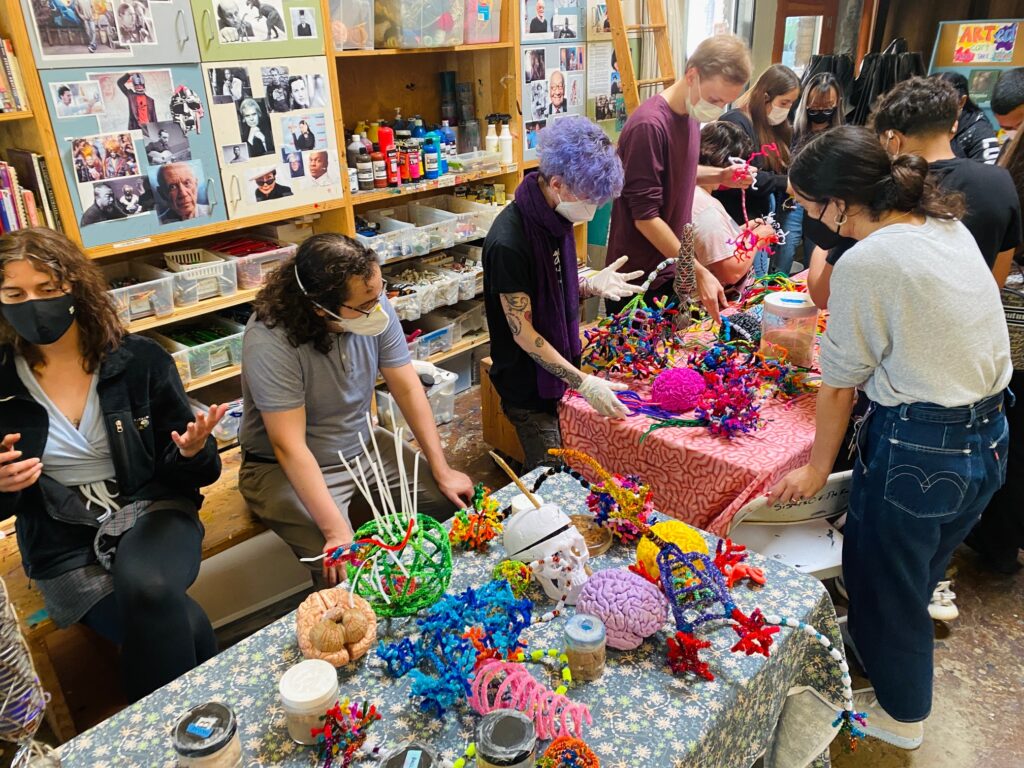
Huge thanks to Jessica, Sam, Program Director Tony Camacho Martinez and the many other awesome people at p:ear. Thanks also to James Cederstrom, Andy Wicklas and the curious sophomores at Fort Vancouver High!
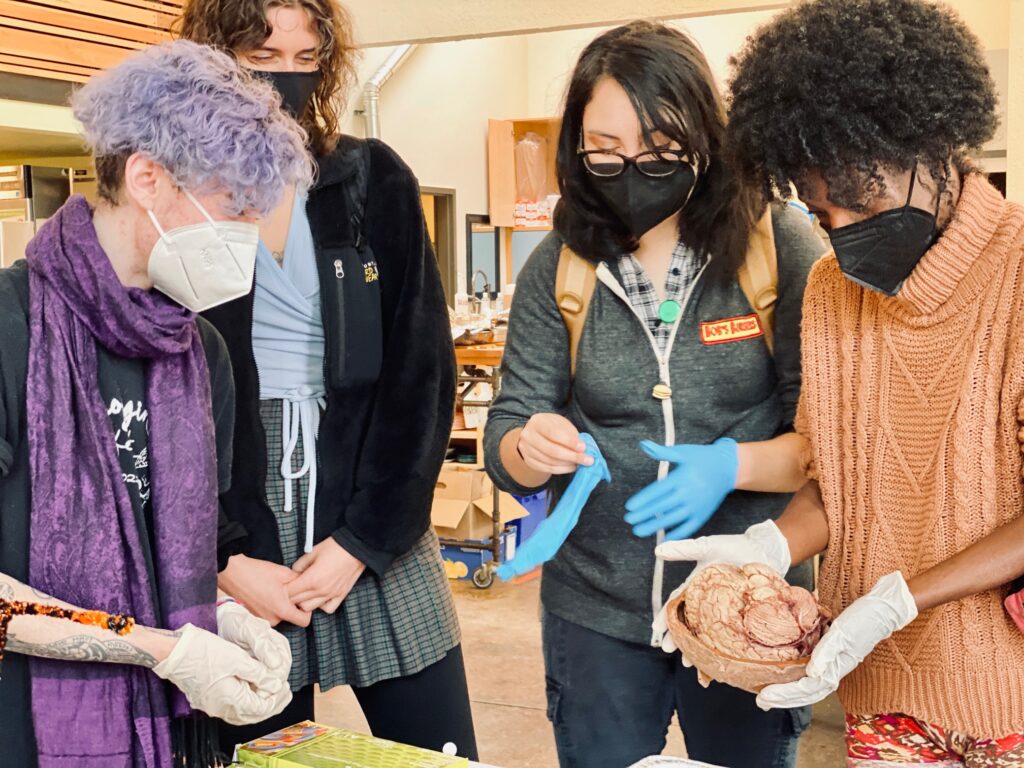
And THANK YOU Noggin volunteers Brooke Searle, Mackenzie Wang, Alex Heinrich, Britta Harbury, Roman Cimkovich, Kassidy Fitzgerald, Nancy MacKenzie, Bella Showerman, Luis Carillo, Tricia Dowis and Danny Leister-Gray from Portland State University for contributing such enthusiasm and expertise!
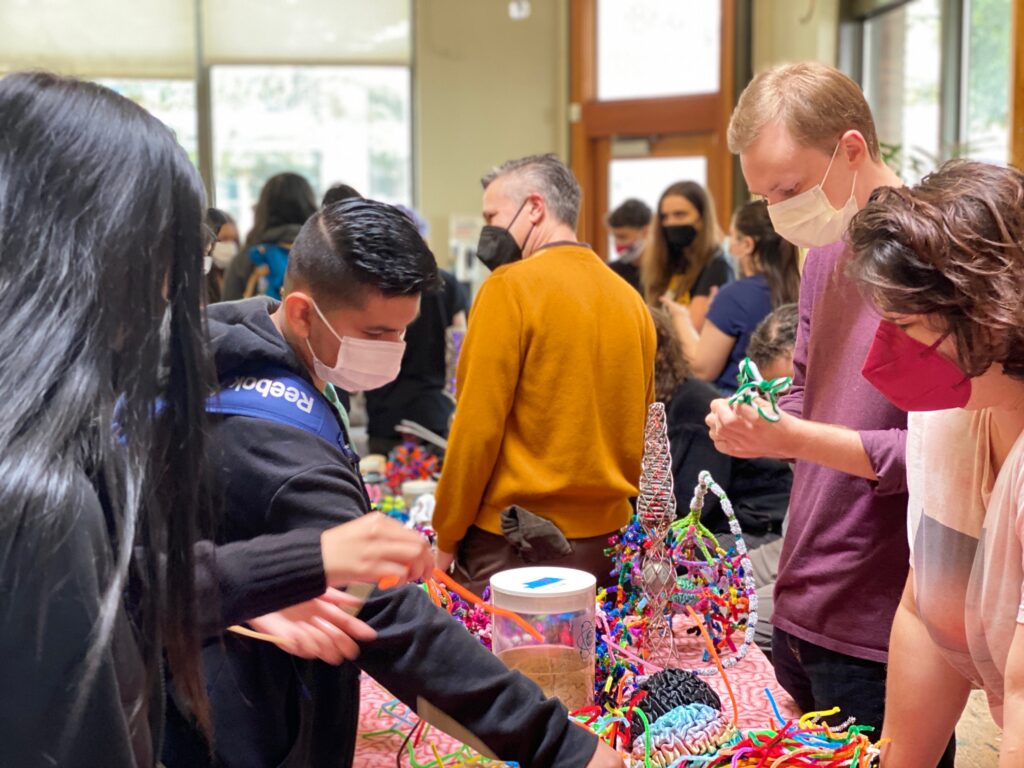
We look forward to returning later this month (October 13 and October 20)!


